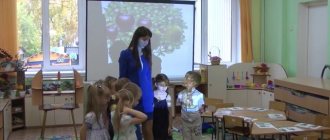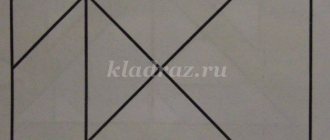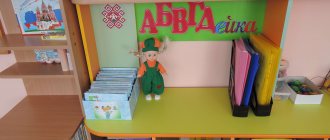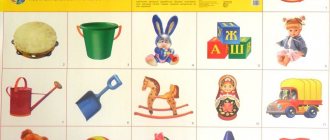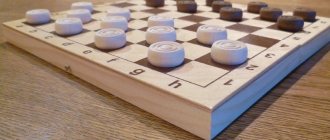What is choreography? This is, first of all, a culture of movement, the art of presenting oneself beautifully in dance. It is also a type of creating an artistic image shown without the help of speech. Feelings, thoughts, and experiences of a person are conveyed through movements and facial expressions.
In modern dance there are three directions, including folk, classical and modern forms. The first and second types are basic, therefore they have a more expressive range of movements. The third option consists of all dance styles that appeared after classical ballet.
Dancing is good for children. After all, such a hobby helps to develop a sense of rhythm, get a good stretch, and gain plasticity and flexibility. In addition, it contributes to the development of creativity, as well as artistic taste.
Dance classes
Choreography for children is, first of all, about gaining confidence at a young age. In the process, the child realizes himself as an individual, directing his energy to self-development.
Lesson plan
The initial task of the choreographer is to introduce children to classical movements, therefore children's choreography includes the following basics:
1. Position of arms and legs.
2. Individual movements.
3. Formation of posture.
4. Outdoor games with learning dance sketches.
After this material is mastered, the dance becomes more complex, and then new compositions are added. Choreography for children is always accompanied by various pieces of classical and folk music, as well as children's songs and modern rhythms.
DANCE EXERCISES FOR CHILDREN 4-5 YEARS OLD
Summary of a choreography lesson for children 5-6 years old. Objectives of the lesson: 1. Continue to teach how to navigate in space and respond to changing parts of music. 2. Develop skills of plasticity, expressiveness, grace. 3. To develop the skills of emotional expression, freedom and creativity in movements, artistic and aesthetic taste. Download: Preview: Municipal institution of further education. "House of Children's Creativity" in Vorkuta. Teacher of additional education Nesterova Marina Sergeevna.
Summary of a choreography lesson for children 5-6 years old. “In search of treasure” Lesson topic: “In search of treasure” Type of lesson: learning new material. Goal: the ability to embody a musical and motor image, to form correct posture. 1. Continue to teach how to navigate in space and react to changing parts of music. Remember and follow the sequence of movements. 2. Develop skills of plasticity, expressiveness, grace. Development of perception and musical-rhythmic sense, rhythmicity of movements.
Develop imagination and fantasy. 3. To develop the skills of emotional expression, freedom and creativity in movements, artistic and aesthetic taste. Cultivating an interest in the need for movements to music, developing flexibility, plasticity, developing the ability to expressively perform movements. Develop the ability to act independently in the game. Methods and techniques: Materials and equipment: Laptop, hoops (for the number of children), audio recording, chest with coloring books (for the number of children). 1. Introductory part (5-8 minutes) – motivation of children, positive emotional attitude, leading up to the main part of the lesson.
2. Main part (14 – 16 minutes) – The main stages of the lesson are stretching on the floor. – Learning dance movements. 3. End of the lesson (2 – 3 minutes) – Generalization, summary of the lesson. – positive pedagogical assessment. Children enter the hall and stand in front of the teacher. Teacher: Hello guys, my name is Marina Sergeevna. Today I will teach your class. (Bow). I want to invite you to turn into pirates, but good ones, and go in search of treasure. Are you ready (Yes) then close your eyes and count to 10. (Children close their eyes, count, the teacher takes off his outer T-shirt and remains in a pirate T-shirt).
So you and I have turned into pirates, but you and I find ourselves on an island, and our ship is on the shore and we need to go ashore to the ship. Are you ready (Yes) Then they stood in a circle and prepared to set off. 1. Warm-up (in a circle) 1. Round dance step - “There is a very narrow path here, and we need to walk one after another with our toes outstretched. Our backs are straight, the top of our heads are reaching towards the ceiling, our necks are stretched out, we are looking straight, we are pulling our toes.”
2. Walking on toes with alternate stretching of a straight arm up - “Guys, I’m very hungry, and the bananas are hanging very high. Let's rise up on our toes and alternately take out bananas with our right and left hands. Our backs are straight, we stretch our arms, we try to stretch ourselves very high, we look straight.” 3. Walking on heels - “Guys, what deep puddles there are here and so as not to get our feet wet, we will walk on our heels.
The backs are straight, the top of the head reaches towards the ceiling. Hands on the belt, fingers gathered together, tummies tucked in.” 4. Variable step - “And here is a swamp, and you and I can get through if we only walk on the pebbles.
But the distance between them is different, 2 pebbles are far from each other, and 3 are nearby. We pull our toes and keep our backs straight.” 5. Easy running on half toes - “Oh, a monkey is chasing us and we have to run away from it. The guys ran on their tiptoes, running lightly.
We run easily, we look straight, our tummies are pulled up, our necks are stretched out.” 6. Running with the shin overlapping - “As many monkeys have appeared, we definitely need to run away from them. Hands behind your back, run faster, try to reach your hands with your heel.” 7. Gallop facing in a circle - “Guys, what a narrow bridge here, we can cross it if we gallop.
They turned to face the circle and galloped off. The backs are straight, the arms are on the belt, the legs are put together.” 8. Gallop with your back in a circle - “Turn your back in a circle.”
9. Breathing exercise. Restoring breathing - well done guys, now we go step by step, inhale through the nose, exhale through the mouth. Let’s go, we continue to pull the sock.” Now you and I have reached the ship, but the passage is closed. An audio recording sounds: “To get on the ship you must undergo training and then the path will open.”
Are you guys ready to get trained? (Yes). Then let's all sit on the carpet. 2. Main stages of the lesson.
Stretch on the floor. I.p. – Sit on the floor, spread your legs as wide apart as possible, hands behind your head, 1-2 – lean to the right, trying to touch the floor behind the knee of your right leg with your elbow, the same to the left side. Repeat 8 times. “Guys, the legs are spread as wide as possible, we try not to bend the knees, we pull the toes, the elbows are spread exactly to the side.” I.p.
Sit on the floor, stretch your legs forward, body straight, arms down. 1-2 – quickly tilt your body down, holding your feet with your hands, press your chest to your legs, straightening your spine, 3-4 – fix this position, 5-8 – Slowly raise your body, come to the position. Repeat 4 times. “Sit up straight, straighten your backs, try to grab your feet, don’t bend your knees.” I.p. – sit on the floor with your hands supporting your back. 1-2 – pull out your socks, trying to touch your thumbs to the floor, 3-4 – pull your socks towards you, repeat 8 times. “The backs are straight, we try to pull the toes” 4. “Alternately stretching the feet” I.p. – sit on the floor with your hand supporting your back. 1-2 – extend the right sock, trying to touch the floor with your thumbs, pull the left sock towards you, 3-4 – extend the left sock, trying to touch the floor with your thumbs, pull the right sock towards you, Repeat 8 times. “The guys sat up straight, straightened their backs, pressed their knees to the floor so that even an ant could not slip through.” I.p. – sit on the floor with your hands supporting your back.
1-2 – toes towards you, 3-4 – legs in 1st position, 5-6 – legs stretched out, turn them inside out (inverted), and heels (plantar side) touch each other, little toes should touch the floor , 7-8 – Stretch out your socks, trying to touch your thumbs to the floor, “It’s become cool outside, let’s do the “sunshine” exercise and it will become warmer outside. We sat upright, straightened our backs, stretched the top of our heads towards the ceiling, pressed our knees to the floor.” Repeat 4 times. 6. “Alternately raising an outstretched leg up” I.p. – sit on the floor with your hands supported behind you, toes extended, 1-4 – Slowly raise your right (left) leg, toes extended, 5-8 – Slowly lower your right (left) leg, toes extended, Repeat 8 times. I.p. – sit on the floor, bend your legs at the knees, move your hips back to the sides, connect your feet with the soles of your feet, 1-3 – lean your hands on your knees and lower them as low as possible to the floor, Repeat 16 times. “Guys, keep your backs straight, if we don’t try, we won’t be able to find the treasure, we try to reach the floor with our knees.”
DANCE EXERCISES FOR CHILDREN 4-5 YEARS OLD
I.p. – lying on your stomach, stretch your arms out in front, placing your palms together, legs extended, feet in the 6th position, 1-4 – lift, legs and arms extended above the floor, bend over. 5-8 – IP, relax muscles, Repeat 6 times. “Guys, let’s sail like boats on the sea. We keep our heads straight, we lower ourselves with restraint, without making a sound, without flopping.” I.p. – kneeling, arms down along the body, back straight, 1-2 – sit on the floor on the right, arms smoothly lowered down to the left. 3-4 – kneel down, raise your arms up. The same goes to the left.
Repeat 8 times. - Well done, guys got up. Let's find out if we were able to cast a spell on the passage to the ship. (Audio recording sounds). So we got on the ship.
Guys, you know that we have an unusual ship. It sails on its own, it doesn’t need a captain to steer it, but the ship floats only when the pirates are dancing on the deck. Therefore, we must also dance to get to the treasures.
Are you ready (yeah) Now we will learn some movements to the music, and when we dance, we will find out whether our ship has reached the treasure. That's why we try, guys.
We will prove to the ship that we can dance well. 3. Learning dance movements. Dance “Pirates” 1. 2 additional steps to the right, on the 2nd step clap your hands, hands on the belt. Same thing to the left. Repeat 2 times. 2. Lunge forward on the right leg, with the right arm extended in front.
3. 4 jumps forward, hands on the belt. At 4 jumps, clap your hands. 4. 3 steps back, with the left foot, the 4th step is an extension. 5. Gallop with your back in a circle, arms to the sides. 6. Turn the head to the right, hands represent a pipe near the left eye. Same thing to the left.
7. Tilt the torso forward, drawing a circle from left to right. Repeat movements 2 times. - Well done, here we are, but before opening the treasure chest, I suggest playing a game. Do you want to play? (Yes).
4. Game “Pirates and the Shark” Rules. We choose a shark according to the rhyme. The shark sits on one side of the hall. “Boats” are hoops on the other side of the hall. There are as many hoops as there are children - “pirates”.
When the music is quiet, the children walk at a calm pace, pretend to swim, and the shark sits “sleeping”; when the music is loud, the children occupy their boats, and the shark tries to catch them. The one who is caught becomes a shark. - Guys, now we will choose a shark according to the counting rhymes. The shark will live on one side of the hall, and our boats will be on the other end of the hall. When quiet, calm music sounds, we will swim, and the shark will “sleep,” and when loud music will sound, we must quickly take our boats, and the shark will catch us. 5. Generalization.
Summary of the lesson. - Well done guys, now it’s time to open the treasure chest. (Open the chest and take out the “treasures” - coloring books). Guys, let's put our treasures on the chairs and take our places. We closed our eyes and started counting to 10, then opened them. Here we are again in our hall.
Guys, where have you been today? Who were you today? What did you like most? That's all for today.
Well done! (bow).
see also
- CHOREOGRAPHY LESSONS FOR CHILDREN 4-5 YEARS OLD
Summary of a choreography lesson for children 5-6 years old. Objectives of the lesson: 1. Continue to teach how to navigate in space, respond to changing parts of music….
- RATING OF DANCE SCHOOLS FOR MOSCOW CHILDREN
10 dance schools in Moscow that are worth paying attention to. Fitness is one of the best ways to combat autumn depression. However, those for whom the hike...
- VARIETIES OF DANCES FOR CHILDREN
Types of children's dances. You've probably noticed more than once how your child dances funny to the rhythm of a popular song. This could be a manifestation of a simple...
- FREE DANCE CLASSES FOR CHILDREN
Free dance classes for children. Even if a child is not inclined towards a career at the Bolshoi Theater, learning to dance will give him a lot. This and...
- RAP MOVES FOR CHILDREN
Hand movements. At the second lesson of the second season of the hip-hop dance school on Slenergy, our incomparable teacher Arthur Panishev again shares his knowledge and...
Choreography for sports ballroom dancing
Very often, choreography is used as a compulsory subject for other professional areas, for example, sports ballroom dancing. Due to the complex coordination of this sport, the main work and time of coaches is devoted to the main ballroom dancing program, so choreography classes are conducted by a choreographer on a separate day. But this class is mandatory for ballroom dancers. As you can see, there’s no escape without choreography.
Classic for children
The ballet choreography program is very serious. After all, this is not just a dance - a way of life. All feelings and emotions require maximum dedication, work, and time. Although all efforts are not in vain, because ballet is at the top of the cultural hierarchy and requires special treatment. This art combines beauty, as well as perfection of form, associated with the depth of the inner world. It is possible to learn multiple movements, but growing as a person, feeling the music, movements, and creating an image in dance is the most difficult thing. Not everyone knows how to perceive a melody deeply, with full responsibility, but only a few. Therefore, it is important to teach your child this quality.
